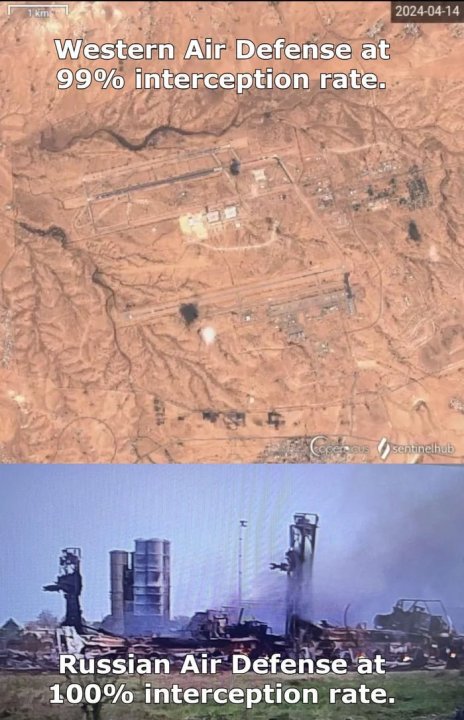https://www.forbes.com/sites/davidaxe/2024/04/11/the-clock-is-ticking-russia-has-a-one-year-reserve-of-weapons/
The Clock Is Ticking: Russia Has A One-Year Reserve Of Weapons
But Ukrainian troops need U.S. support to defeat increasingly fragile Russian formations
As Russia’s wider war on Ukraine grinds into its third year, three main dynamics are shaping the battlefield.
First: Russia is fully mobilized—politically, industrially and militarily. But this mobilization is depleting resources the Kremlin can’t renew. Most importantly, stocks of old Cold War-vintage weapons.
In other words, Russia is strong, but fragile.
Second: Ukraine is mobilizing, too, but it still relies on foreign aid to meet urgent financial and military needs—and Russia-friendly Republicans in the U.S. House of Representatives are withholding a decisive portion of that aid.
Third: Ukrainian tactics are superior to Russian tactics, helping Ukrainian formations to defeat much larger Russian formations. But tactics are irrelevant when and where Ukrainian forces simply run out of ammunition.
The interplay of these three dynamics explains the seeming contradictions that are evident every day along the 600-mile front line of the wider war. The Ukrainians defeat most Russian attacks, inflicting catastrophic casualties on increasingly under-equipped Russian assault groups.
But the Russians keep coming, and keep gaining ground. And the one person who can stop them—Republican Speaker of the U.S. House of Representatives Mike Johnson—so far has refused to do so.
All Johnson has to do is bring to a vote an overwhelmingly popular bill that would send $60 billion in aid to Ukraine. Aid that would pay for the ammunition Ukrainian forces need to hold off Russian forces until the Russians finally deplete their reserves of old Cold War weapons.
In 26 months of hard fighting, the Russian military has lost 15,300 tanks, fighting vehicles, howitzers and other weapons in Ukraine, along with hundreds of thousands of troops. The Ukrainian military’s own losses are a third as heavy.
And yet the Russian force in Ukraine is bigger than ever. “The army is actually now larger—by 15 percent—than it was when it invaded Ukraine,” U.S. Army general Christopher Cavoli, NATO's top commander, told the House Armed Services Committee. “Over the past year, Russia increased its front-line troop strength from 360,000 to 470,000.”
That’s possible only because the Kremlin drafted more than 300,000 men starting in late 2022 in addition to increasing bonuses for volunteers. At the same time, Russian brigades have curtailed basic training for new recruits in order to speed fresh forces to the front.
But these unprepared new recruits don’t survive very long on the front line. Lately, between 800 and a thousand Russians have been dying every day in the wider war, according to the Ukrainian defense ministry.
Russian soldiers die as fast as they arrive in Ukraine. The Estonian defense ministry concluded, in one recent study, that killing 100,000 Russians this year would permanently damage, if not collapse, the Kremlin’s mobilization effort.
Ukraine is on track to kill 300,000 Russians this year. It isn’t sustainable.
Nor are Russia’s vehicle losses sustainable. Russian industry produces 500 or 600 new tanks and maybe a little more than a thousand new fighting vehicles every year. The Russian military loses more than a thousand tanks and close to 2,000 fighting vehicles every year—and the loss rate is increasing.
There’s a gap—one the Kremlin fills by pulling out of long-term storage tanks and fighting vehicles dating back to the 1970s, or even the ’60s or ’50s in some cases. But these old vehicles are a finite resource. Built during the Soviet Union’s industrial heyday, they cannot be replaced with new production.
Ominously for the Russians, the most recent projections anticipate that, as early as mid-2025, there won’t be any more old tanks and fighting vehicles left in storage. “Time is running out for Russia,” wrote Artur Rehi, an Estonian soldier and analyst.
We’re already seeing evidence of a shortfall: Russian troops riding into battle in unarmored freight trucks and even open-top golf carts that the Kremlin purchased from a Chinese company.
It should go without saying that golf carts don’t last long in combat with, say, Ukraine’s angriest anti-tank missile teams and most skilled drone operators. It doesn’t matter if the Russian army in Ukraine has 300,000 or 400,000 people if those people utterly lack protection on the battlefield.
The fragility of Russia’s army might be more evident if Ukraine’s own army weren’t starving for ammo and, at times, incapable of shooting back. When Ukraine’s 2023 offensive petered out late last year after achieving modest gains, Russia seized the initiative—and went on the attack all along the front line.
The timing couldn’t have been worse for the Ukrainians. At almost exactly the same moment in mid-October, Speaker of the House Johnson refused to bring to a vote the $60 billion in fresh funding U.S. president Joe Biden had proposed for Ukraine.
Johnson is a close ally of former president Donald Trump, who was impeached in 2019 for attempting to coerce Ukrainian officials to support a smear campaign targeting Trump’s political opponents. Trump has since called on Ukraine to surrender portions of its territory to Russia.
Deprived of the hundreds of thousands of artillery shells and thousands of surface-to-air missiles that Biden had hoped to buy for them, Ukrainian forces have had to make hard choices: retreating from positions that, with enough firepower, they might have held.
A 2,000-person Ukrainian garrison quit the city of Avdiivka in mid-February after inflicting tens of thousands of casualties on the attacking Russians—and then running out of ammo. Now another 2,000-person Ukrainian garrison faces the same terrible dilemma in the canal district of Chasiv Yar.
At the same time, Ukraine’s best air defense batteries have fallen silent for a want of American-made missiles. Ukraine’s biggest cities—Kyiv, Kharkiv and Odesa—are increasingly defenseless as more Russian missiles and bombs pummel them.
Six hundred Ukrainian civilians, including children, died in air raids in March. A missile raid on Kyiv last night destroyed the city’s biggest power plant, casting thousands of homes, and vital weapons workshops, into darkness. “More air defense, and our assistance, is needed now,” Bridget Brink, the U.S. ambassador to Ukraine, pleaded yesterday.
Ukrainian troops are losing ground, but they’re losing ground to legions of poorly-trained Russian troops riding in antique vehicles. They’re losing ground only because they’re running out of ammo. Ukrainians’ “ability to defend their terrain that they currently hold and their air space would fade rapidly—will fade rapidly—without ... continued U.S. support,” Cavoli said.
Conversely, with U.S. support, a rearmed Ukrainian military could protect its cities from Russian raids and, on the front line, achieve firepower superiority over a Russian military that’s fast running out of modern weapons.
The choice, tragically, isn’t the Ukrainians’ to make. It’s up to one man, an American. The leader of a thin Republican majority in one house of the U.S. Congress.
Ukrainian president Volodymyr Zelensky, for one, understands the politics and the stakes. “If Ukraine's partners act decisively, I am confident that we can defeat Russian terror before it spreads further,” Zelensky wrote today.















